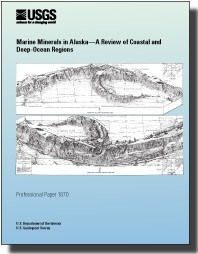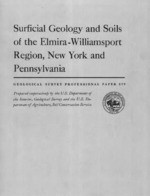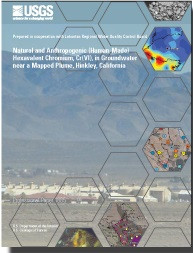
Product Details
- Product Number
- 534143
- Series
- PP-1870
- Scale
- NO SCALE
- Alternate ID
- 16-1870
- ISBN
- 978-1-4113-4475-4
- Authors
- AMY GARTMAN
- Version Date
- 01/01/2022
- Regions
- AK
- Countries
- USA
- Media
- Paper
- Format
- Bound
Additional Details
- Description
-
Marine minerals in Alaska — A review of coastal and deep-ocean regions
First posted July 14, 2022
For additional information, contact: Pacific Coastal and Marine Science Center U.S. Geological Survey 2885 Mission St. Santa Cruz, CA 95060
Abstract
Minerals occurring in marine environments span the globe and encompass a broad range of mineral categories, forming within varied geologic and oceanographic settings. They occur in coastal regions, either from the continuation or mechanical reworking of terrestrial mineralization, as well as in the deep ocean, from diagenetic, hydrogenetic, and hydrothermal processes. The oceans cover most of the Earth’s surface and as a result, any inventory of global resources is incomplete without the inclusion of marine minerals. This study by the U.S. Geological Survey reviews current knowledge regarding deep-ocean and coastal marine minerals within the marine areas surrounding Alaska, including the Alaska Outer Continental Shelf (OCS). For the purposes of this study, we have divided these areas in to eight regions: (1) Gulf of Alaska seamounts, (2) Chukchi Borderland, (3) Canada Basin, (4) Aleutian Arc, (5) Seward Peninsula, (6) Goodnews Bay, (7) Bristol Bay and Alaska Peninsula, and (8) southern and southeastern Alaska. The Alaska OCS encompasses several areas broadly conducive to marine mineral formation, including extensional basins resulting from an active subduction zone where massive sulfide deposits may form, deep abyssal plains with conditions that may lead to manganese nodule formation, seamounts that can provide substrate for the growth of ferromanganese crusts, and erosional settings and submerged continental crust where placer deposits are found. For deep-ocean hydrothermal minerals and manganese nodules, the Alaska OCS contains prospective regions, including the Canada Basin and the Aleutian Arc; however, no such minerals have yet been identified. We explore the probability that these minerals occur based on reviews of existing geologic and oceanographic data within the relevant sections. In regions far from shore data are limited. Deep-ocean ferromanganese crusts are known to occur in two regions: (1) the Gulf of Alaska seamounts and (2) the Chukchi Borderland in the Arctic Ocean. Limited sampling has occurred in both regions, and along the Chukchi Borderland the sampling was outside of the OCS and the U.S. Exclusive Economic Zone. Data relevant to coastal minerals is more extensive, and in some places fairly systematic sampling was conducted. Several nearshore placer deposits have been exploited for decades; however, the potential for nearshore extension of terrestrial ore deposits is less well considered. This contribution considers the state of knowledge regarding marine mineral occurrences within the Alaska regions and identifies the data gaps in order to help inform future marine mineral related research efforts around Alaska.
- Print Date
- 2022
- Height In Inches
- 11.000
- Width In Inches
- 0.220
- Length In Inches
- 8.500
- Two Sided
- Yes
- Pieces
- 1
- Languages
- English





